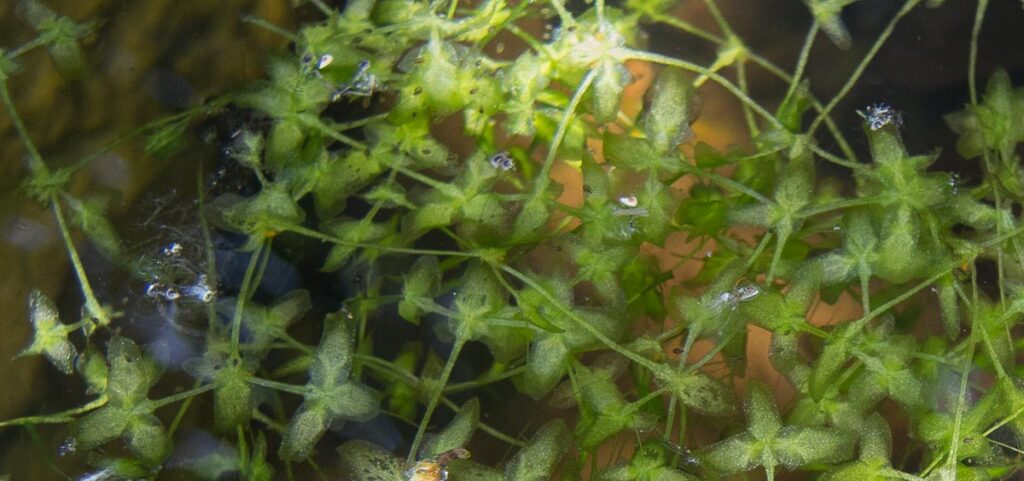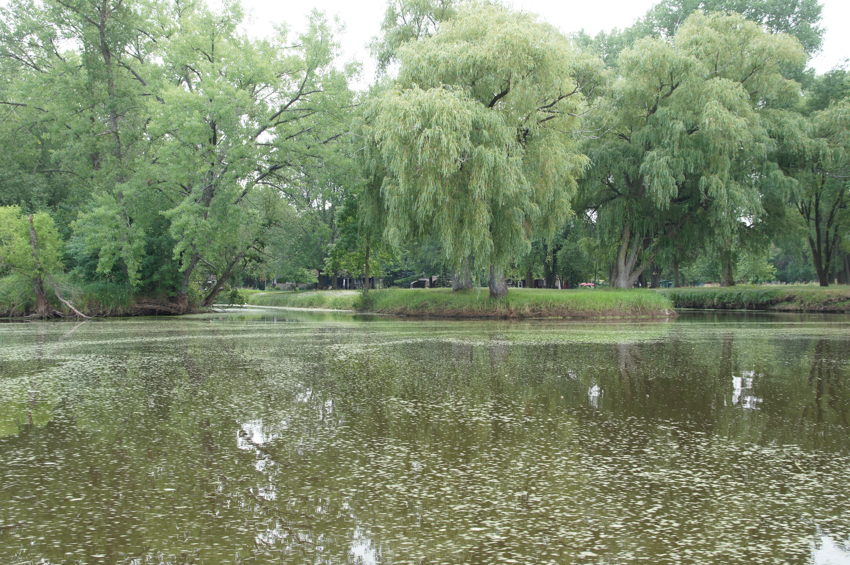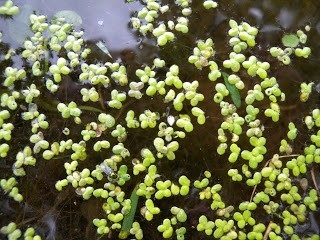All of the Duckweeds and watermeals belong to the Duckweed family (Lemnaceae). Most species float on the water surface; some are more often tangled in submergent aquatic plants. They are often mistaken for algae in bays, channels, and other backwaters, where they can form a thick floating mat on the surface. Duckweeds, however, are not algae but tiny flowering plants. Watermeals are actually the world’s smallest flowering plant, but they rarely produce flowers. Instead, duckweeds and watermeals most frequently reproduce vegetatively by budding off into new individuals. Watermeal gets its name from its size, literally the size of cornmeal, and not much larger than the period at the end of this sentence. These plants, and the insects they attract, are good sources of food for ducks, as their name suggests.
In late summer, duckweeds form turions, which break off the plant and sink to the bottom. The turion will spend the winter there. In spring they form a gas bubble and float to the surface. Once there, they form into new duckweed plants
Lesser Duckweed, Lemna Minor
The Most Common Duckweed, found almost everywhere there is quite water.
Star Duckweed, Lemna trisulca
This duckweed is often found submerged on aquatic plants or lake and wetland bottoms. Their unique star-shaped appearance makes them the easiest duckweeds to identify at a distance.

Large Duckweed, Spirodela polyrhiza
Our largest duckweed, it is distinctive in its large size, many hair-like roots that hang down into the water, and its purplish undersides.
Watermeal, Wolffia spp.
There are several species of Wolffia in the Upper Midwest. In small numbers, watermeal are overlooked because of their tiny size, but often they can be found in large numbers with duckweeds. Many are only 0.5-1.5 mm long.


